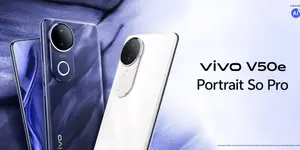Its time for some Snapdragon 865 Phones in India now, and iQOO 3 is one of the first phones to bring the Snapdragon 865 Chipset in India, but at the price, the iQOO 3 has been launched, it directly competes with one of Samsung’s best smartphones, the Samsung Galaxy S10 Lite which was previously launched in India. Users are confused about what to choose, either Samsung’s branding or the new brands’ latest smartphone, so here’s an in-detail comparison on the S10 Lite vs iQOO 3.
Also Read: Samsung S10 Lite Review
Design
Beginning with the design of the Samsung Galaxy S10 Lite, The S10 Lite features a Glastic ( a fancy name for the combination of Glass and Plastic) body. The S10 Lite is a phone made for people who want a lightweight smartphone that also feels premium to hold. Due to the material used on the back of the S10 Lite, the body is much less prone to scratches and getting shattered. On the other face of the coin, the new iQOO 3 has a glass back design which definitely feels more premium but it attracts a lot of fingerprints and is quite heavy in the hand.
For gamers, the iQOO 3 has a 4D Game Vibration motor and comes with customizable Air Triggers which can be used as fire buttons and more in a lot of games.
Both the S10 Lite and the iQOO 3 feature a big camera module on the rear, where both of them have a similarly sized rectangular camera module situated at the top left corner.e. An advantage to iQOO 3 as it sports the 3.5mm headphone jack, but the Galaxy S10 Lite as an additional benefit with a Hybrid SIM slot that can be used to expand the memory with a micro-SD card.
Also read: Top 5 Video Streaming Apps For iOS And Android
Display
On to the display section, the Samsung Galaxy S10 Lite sports a bigger 6.7-inch FHD+ Super AMOLED Display compared to the 6.44 inches FHD+ AMOLED Display on the iQOO 3. Unlike other newer phones in 2020, none of these two phones have a high refresh rate displays, both of them are at 60Hz. But the iQOO 3 5G has a 180Hz Super Touch Response rate, which makes it feel faster and smoother while gaming.
Both the phones have support for Widevine L1 Certification, so streaming content on Netflix and Prime Video isn’t a problem. Overall in the display department, We personally will pick Samsung’s Super AMOLED Display, as Samsung is best known for its screens in the market.
Camera
A category where people look into the most before buying a smartphone is the Camera section. The all-new iQOO 3 sports a quad rear camera setup comprising of a primary 48-megapixel sensor + a 13MP 20x Digital Zoom Lens + a 13-megapixel Ultra Wide-Angled Lens + a 2MP Depth Sensor. The photos come out to be sharp, and well detailed, but the software processing tends to blow out the shadows. On the other hand, the Samsung Galaxy S10 Lite features a 48 megapixel primary f/2.0 + a 12-megapixel wide-angle camera + 5-megapixel macro lens as well. The S10 Lite misses out on the additional Telephoto lens and gives the iQOO 3 a clear advantage, the image processing on this Samsung phone has been done well, the colors come out to be more natural and the images are well exposed. Although we personally prefer the S10 Lite’s cameras, but due to the lack of a Telephoto Lens, the iQOO 3 takes the lead.
On to the selfies, the iQOO 3 has a 16-megapixel sensor on the front which can capture some decent selfies, while the sensor on the S10 Lite is a 32-megapixel sensor housed in the centred punch hole, Obviously, the S10 Lite takes well-detailed shots, but it is not to say that the iQOO 3 doesn’t have a good selfie camera.
In the portrait mode, the iQOO 3 makes use of the telephoto lens which helps in getting closer to the subject to take a portrait which comes out to be better-looking and than the one shot on the S10 Lite.
Performance
One department where the iQOO 3 clearly wins without any struggles or competition is the performance, the iQOO 3 sports the latest flagship chipset from Qualcomm, the Snapdragon 865. While the S10 Lite has a generation older Snapdragon 855 Chipset which is capable as well. On the day to day performance, users won’t feel any major differences or lags on both the phones, but while gaming or performing processor intense tasks, the Snapdragon 865 on the iQOO 3 comes to the rescue.
The iQOO 3 also has support for 5G, comes with the upgraded UFS 3.1 Storage compared to the UFS 2.1 on the S10 Lite, has LPDDR5X RAM compared to the LPDDR4X on the S10 Lite.
Even on the benchmarks, the iQOO 3 takes over a clear lead by scoring 5,97,583 points in Antutu, while the S10 Lite scores 4,53,785. The general performance on both the phones is excellent and you won’t go wrong with any of both.
Biometrics and Wireless Charging:
Both the iQOO 3 and the S10 Lite feature an in-display fingerprint scanner, all thanks to the AMOLED Panels, but the speeds on both the phones are quite different, The one seen on the iQOO 3 is much faster than the one seen on the S10 Lite, but with Face Unlock, the S10 Lites takes a jump ahead with the unlocking speeds and accuracy. Both the phones don’t have support for either wireless charging or nor come with official IP68 Water and Dust Resistance.
Audio:
Only the iQOO 3 has a 3.5mm headphone jack, while the S10 Lite misses out. The iQOO 3 has Hi-Fi High-Res Audio Certification and the Audio output from both the headphone jack and the speakers. But the Hi-Fi DAC on the iQOO 3 makes a huge difference and the audio output from wired earphones is significantly better than the Samsung S10 Lite. The sound has good depth, bass and feels charming. While the S10 Lite has decent sounding speakers as well, the sound is loud and clear. The iQOO 3’s speakers a little louder and have more depth to the sound.
Also read: Realme 6 And Realme 6 Pro Launched In India
User Interface:
The Samsung Galaxy S10 Lite runs on OneUI 2.0 based on Android 10, while the iQOO 3 5G runs on the new iQOO UI which is based on Android 10. While this new UI seems like a modified version of Vivo’s FunTouch OS, it has some really great functions that no other UI matches to. While most of the gamers need a UI packed with features, they will prefer the iQOO UI, but for casual users who need a cleaner looking experience, they will opt for the OneUI 2.0. We personally will pick the OneUI 2.0 on the S10 Lite as it looks minimal and can get all the basic tasks done easily.
Battery:
Surprisingly, both the phones have an almost same sized battery capacity with the iQOO 3 having a 4,400mah battery while the S10 Lite having a 4,500mah battery. So now, this just boils down to the optimisation and charging speeds. The OneUI 2.0 has better battery optimisations and offers a slightly longer screen on time. When it comes to Charging, the iQOO 3 kills the S10 Lite with having a 55W charger in the box which is claimed to charge the phone about 50 percent in just 15 minutes. On the other hand, the S10 Lite has a 25W Fast Charger in the box and comes with support for 45W Fast Charging, With the S10 Lite, we could easily get a screen on time of 6-7 hours while the iQOO 3 could give us about 5 hours on average. Overall, the battery life on the S10 Lite is better than the iQOO 3, while the charging capability of the iQOO 3 with the 55W charging adapter is an advantage over the S10 Lite. So, there is no clear winner here, it boils down to personal preference.
Pricing
A deciding factor for most of the people, the Samsung Galaxy S10 Lite is priced at Rs. 40,000 in India, while the iQOO 3 has been aggressively priced at Rs. 36,990 in India. With a difference of Rs. 3000, the S10 Lite offers better battery backup, has a better selfie camera and more.
But if you are a gamer, and want a phone that delivers extensive performance, has gaming-specific features such as a dedicated gaming mode and air triggers, then undoubtedly opt for the iQOO 3 which has a 180Hz Touch Response Rate Display as well, a better processor, fairly better cameras and more, whereas, if you want a smartphone with a better battery capacity and a lightweight form factor that we recommend you the S10 Lite.
















